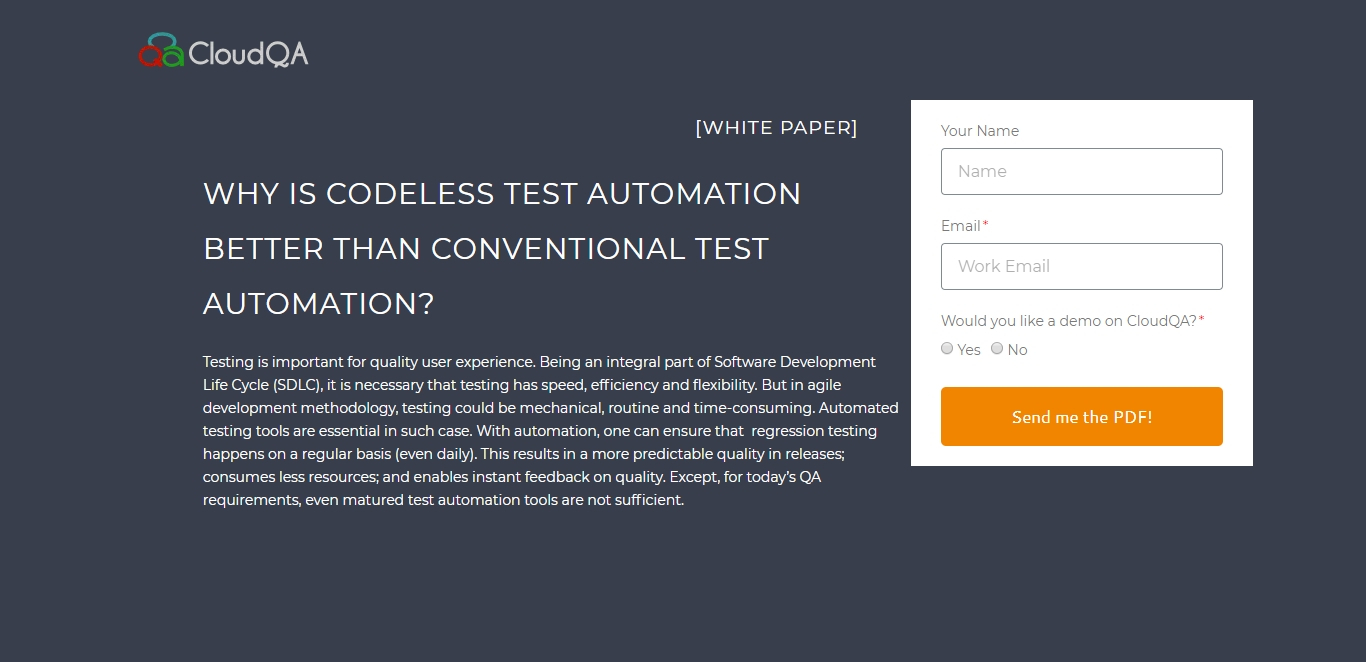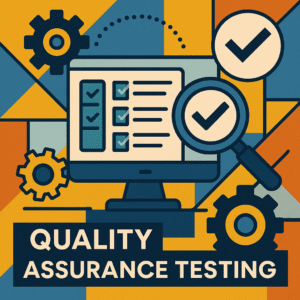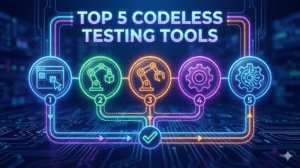The Need for AI Apps Testing: A New QA Paradigm
Last Updated: December 16th 2025
Building AI-driven applications? Ensure your chatbots and models are safe, accurate, and unbiased. Validate your AI apps with CloudQA or speak to an expert about our advanced testing solutions.
For a complete guide to using AI in Test Automation, refer to our master article here.
For the last thirty years, software testing has relied on a single, comforting assumption: Computers are deterministic.
In traditional software development, if you input 2 + 2, the output must always be 4. If it is 4 today, it will be 4 tomorrow. If it outputs 5, it is a bug. This binary logic – Pass or Fail, True or False – is the foundation of every major testing framework from JUnit to Selenium.
But today, we are building a new generation of software that breaks this rule. We are deploying Generative AI, Large Language Models (LLMs), and probabilistic recommendation engines. In these applications, the input Describe the sunset might yield a different description every single time. Neither answer is “wrong,” but one might be poetic while the other is factually incorrect or even offensive.
This shift from Deterministic Software (rules-based) to Probabilistic Software (model-based) requires a fundamental rethinking of what Quality Assurance means. We are no longer just checking for bugs; we are checking for behavior, safety, and alignment. This is the new paradigm of AI Apps Testing.
Table of Contents
The Core Problem: Testing the Unpredictable
When you test a standard web application, you are testing the logic written by a developer. When you test an AI application, you are testing the behavior of a model trained on billions of data points.
The challenges here are unique and often frightening for traditional QA teams:
1. Non-Determinism
As mentioned, AI models are stochastic. They involve an element of randomness (often controlled by a parameter called “Temperature”). A test case that passes on Monday might fail on Tuesday simply because the model chose a slightly different word, which triggered a different downstream effect. Traditional assertions that look for exact string matches (assert text == “Hello”) are instantly rendered useless.
2. The Hallucination Hazard
AI models can sound incredibly confident while being completely wrong. A financial chatbot might confidently invent a non-existent tax law. A medical bot might recommend a dangerous dosage. Standard functional testing will see a valid grammatical sentence and mark it as “Pass.” Only deep, semantic testing can catch a hallucination.
3. Bias and Toxicity
Software has never had a “personality” before. Now it does. Your AI application reflects the data it was trained on. Without rigorous testing, your customer service bot might respond to a user with a racial slur or gender-biased advice. This is not a functional bug; it is a reputational catastrophe.
The New Testing Stack: How to Test AI
Since we cannot rely on simple “Expected vs. Actual” comparisons, we need a new set of methodologies. Testing AI applications requires a layered approach that combines automated metrics with human insight.
Layer 1: Functional Verification (The Container)
Before you test the “brain” (the AI), you must test the “body” (the application wrapper).
- Latency Testing: AI models are heavy. Does the response take 10 seconds to load?
- Context Windows: Does the app crash if the conversation exceeds the token limit?
- Integration: Does the chatbot correctly hand off to a human agent when it gets stuck? These can be tested using standard automation tools found in our 2025 Guide to AI Testing Automation.
Layer 2: Model Evaluation (The Brain)
This is where the new paradigm kicks in. You need to test the quality of the AI’s answers.
- Similarity Scoring: Instead of exact matches, we use Vector Embeddings to measure semantic similarity. If the expected answer is “The store is closed on Sundays” and the AI says “We are not open on Sunday,” a vector comparison sees these as a 95% match (Pass).
- Adversarial Testing (Red Teaming): This involves actively trying to “break” the AI. Testers feed it prompt injections, confusing logic, or toxic inputs to see if the safety guardrails hold.
- Factuality Checks: Connecting the AI output to a trusted knowledge base (Ground Truth) to verify accuracy.
Layer 3: Continuous Monitoring
AI models suffer from “Drift.” A model that works perfectly today might degrade next month as the underlying data changes or as user behavior shifts. Continuous monitoring involves tracking the “sentiment” of user interactions in production. Are users getting angrier? Are the thumbs-down ratings increasing?
Strategic Shifts for Engineering Leaders
For software engineering leaders, building a QA strategy for AI apps means hiring for new skills.
You don’t just need automation engineers who know Java or Python. You need “AI Quality Engineers” who understand:
- Prompt Engineering: How to design prompts that test the boundaries of the model.
- Data Science Basics: Understanding concepts like precision, recall, and F1 scores.
- Ethics and Compliance: Knowing the legal implications of AI bias in your specific industry.
How CloudQA Bridges the Gap
Testing AI applications can feel like the Wild West, but you still need a sheriff. CloudQA provides the infrastructure to tame the chaos.
While specialized libraries exist for evaluating models, you still need a robust framework to drive the browser, interact with the chat interface, and simulate real user journeys.
- Low-Code Simulation: CloudQA allows you to script complex conversations with your chatbot. You can simulate a user asking a question, waiting for the response, and then asking a follow-up question, mimicking a real multi-turn conversation.
- Dynamic Assertions: We are integrating capabilities that allow you to validate “intent” rather than just text. You can define success as “The bot should offer a refund,” and our platform can verify if that intent was met, regardless of the specific words used.
- Scalable Red Teaming: You can use our parallel execution grid to fire thousands of adversarial prompts at your bot simultaneously, stress-testing its safety filters before you go live.
Conclusion
The era of “Five nines reliability” is evolving into the era of “Trust and Safety.” When we release AI applications, we are asking our users to trust a machine that thinks.
Validating that trust is the single most important job of the modern Quality Assurance team. It requires moving beyond the rigid checklists of the past and embracing a flexible, probabilistic, and deeply human approach to testing.
Frequently Asked Questions
Q: Can I use Selenium to test an AI chatbot?
A: Selenium can automate the actions (typing text, clicking send), but it struggles to validate the response because the text changes constantly. You need a wrapper or a tool like CloudQA that supports dynamic, intelligent assertions.
Q: What is “Ground Truth” in AI testing?
A: Ground Truth is a dataset of “correct” answers verified by humans. In testing, you ask the AI a question from this dataset and compare its generated answer to the human-verified answer to score its accuracy.
Q: How do you automate toxicity testing?
A: You can use a secondary AI model to test the first one. You feed the output of your chatbot into a “Safety Model” (like OpenAI’s moderation endpoint) which scores the text for hate speech, violence, or sexual content.
Related Articles
RECENT POSTS
Guides

How To Select a Regression Testing Automation Tool For Web Applications
Regression testing is an essential component in a web application development cycle. However, it’s often a time-consuming and tedious task in the QA process.

Switching from Manual to Automated QA Testing
Do you or your team currently test manually and trying to break into test automation? In this article, we outline how can small QA teams make transition from manual to codeless testing to full fledged automated testing.

Why you can’t ignore test planning in agile?
An agile development process seems too dynamic to have a test plan. Most organisations with agile, specially startups, don’t take the documented approach for testing. So, are they losing on something?

Challenges of testing Single Page Applications with Selenium
Single-page web applications are popular for their ability to improve the user experience. Except, test automation for Single-page apps can be difficult and time-consuming. We’ll discuss how you can have a steady quality control without burning time and effort.

Why is Codeless Test Automation better than Conventional Test Automation?
Testing is important for quality user experience. Being an integral part of Software Development Life Cycle (SDLC), it is necessary that testing has speed, efficiency and flexibility. But in agile development methodology, testing could be mechanical, routine and time-consuming.






